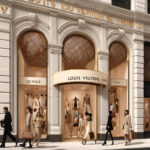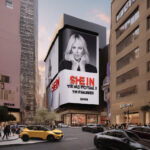In the rapidly changing landscape of social media, TikTok has emerged as a game-changer for brands in the fashion, luxury, and beauty sectors. With over 1 billion global community members and 170 million monthly active users in North America, the platform has redefined how brands engage with their audiences. Recent studies indicate that U.S. adults spent more time on TikTok than on competing platforms such as YouTube, Facebook, and Instagram, underscoring its growing importance in the marketing world.
The effectiveness of TikTok as a marketing tool lies in its unique way of capturing user attention. Unlike conventional social platforms, TikTok is designed for active engagement rather than passive consumption. Matt Cleary, TikTok’s head of retail, emphasizes that the sound-on, full-screen experience of TikTok requires users to take deliberate actions to explore content. This design inherently fosters a stronger connection between users and advertisers.
The platform’s interest-graph algorithm plays a pivotal role in discovering content tailored to users’ preferences. Every interaction, from likes to the types of videos watched, informs the algorithm, ensuring that each user receives content that resonates with them. According to the National Research Group’s 2023 study, 64% of users believe TikTok surpasses other platforms in delivering relevant content. This targeted approach enhances brand visibility and engagement, paving the way for organic and paid campaigns to excel.
Moreover, TikTok has become a significant source of information for younger generations. A staggering 40% of Gen-Z users prefer TikTok and Instagram over Google for discovering restaurants, as noted by Google’s senior vice president. This shift in content consumption behavior highlights TikTok’s role not just as a platform for entertainment but also as a primary source for lifestyle decisions.
One of the most compelling aspects of TikTok is its ability to create and foster communities around niche interests. From the trending “Brat Summer” phenomenon, ignited by Charli XCX’s album, to community-focused formats like #GRWM (Get Ready With Me), TikTok thrives on cultural conversations that resonate with its audience. Content trends can quickly translate into real-world phenomena, influencing fashion styles, makeup looks, and even social attitudes.
UGC (User-Generated Content) plays an essential role in this equation. The community not only consumes content but actively participates in its creation, thereby informing brand narratives. In a culture that increasingly values authenticity, TikTok creators, often more relatable than traditional influencers, become vital. Sara McCorquodale, founder and CEO of social influencer intelligence platform CORQ, points out that the most engaging content often comes from creators with fewer than 100,000 followers. This trend supports the notion that audiences gravitate towards individuals who represent their everyday realities.
The platform’s influence extends beyond individual creators to impact brand strategies significantly. Brands that successfully leverage TikTok’s unique capabilities enjoy unprecedented reach. With the ability to go viral, even lesser-known brands can achieve extensive visibility. Recent statistics reveal that 44% of users discover brands they weren’t initially searching for while using the app—this often translates into direct consumer action.
The phenomenon of TikTok’s immense influence is further seen in its ability to shape purchasing behaviors. According to a Material study conducted in 2023, 53% of users who encountered brands in TikTok’s Shop feature expressed a strong likelihood of purchasing related apparel. TikTok simply stands out as a fertile ground for new luxury product discovery, making it essential for brands aiming for long-term success.
Despite widely-held misconceptions, TikTok is not exclusively a Gen-Z domain. The platform has captured the attention of diverse demographics—over 30% of users now belong to older generations. Brands that remain fixated on a youthful audience may inadvertently overlook significant opportunities for engagement with adults who are equally interested in fashion and beauty.
In conclusion, as brands consider their marketing strategies, TikTok’s rapidly growing influence cannot be ignored. To effectively capitalize on this dynamic platform, brands must prioritize authenticity, community engagement, and an understanding of the unique characteristics that make TikTok what it is. Those who can leverage TikTok’s creative environment to tell their stories and connect with their audiences are well-positioned to thrive in an increasingly competitive landscape.












